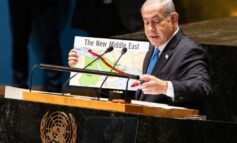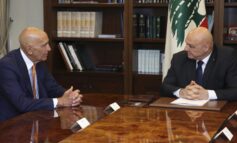BYBLOS, Lebanon (Reuters) — A Lebanese scientist following the genetic footprint of the ancient Phoenicians says he has traced their modern-day descendants, but stumbled into an old controversy about identity in his country.
Geneticist Pierre Zalloua has charted the spread of the Phoenicians out of the eastern Mediterranean by identifying an ancient type of DNA which some Lebanese, Syrians and Palestinians share with Maltese, Spaniards and Tunisians.

|
| Geneticist Pierre Zalloua |
A seafaring civilization which reached its zenith between 1200 and 800 BC, the Phoenicians’ earliest cities included Byblos, Tyre and Sidon on Lebanon’s coast.
But their link to Lebanon, whose borders were drawn as recently as 1920, has long been a subject of controversy in a country split between an array of religious communities. “Negotiating these waters is a very delicate job,” Zalloua said.
Seeking to set themselves apart from their Muslim compatriots, some Lebanese Christians have drawn on the Phoenician past to try to forge an identity separate from the prevailing Arab culture.
“Whenever I use the word ‘Phoenician,’ people say ‘this guy is trying to say we are not Arabs’,” said Zalloua, himself a Christian. But after five years of research, the scientist says his work has shown what Lebanese have in common. “We had a great history — let’s look at it,” he said.
The genetic marker which identifies descendants of the ancient Levantines is found among members of all of Lebanon’s religious communities, he said. “It’s a story that can actually unite Lebanon much more than anything else.”
The marker, known as the J2 haplogroup, was found in an unusually high proportion among Lebanese, Palestinians and Syrians tested by Zalloua during more than five years of research. He tested 1,000 people in the region.
“The further south you go, the less likely you are to see this marker. The further north and the further inland you go, the less you see of this marker. It is very Levantine,” he said.
The same marker was found in unusually high proportions on other parts of the Mediterranean coast where the Phoenicians are known to have established colonies, such as Carthage in today’s Tunisia.
“It’s abundantly present in the Iberian peninsula,” Zalloua added. In Malta, the ancient DNA type was found in an extremely high 30 percent of samples, he said.
“We are seeing a pattern of expansion out of the Levant area along the maritime routes the Phoenicians used,” he said.
The J2 haplogroup has been dated using a calculation based on the rate at which DNA mutates. The fewer the mutations on any given type of DNA, the older it is.
“Our calculation estimates it at roughly 12,000 years old, plus or minus 5,000 years. It’s an old haplogroup and we are pretty sure it originated in this area,” he said.
Many Lebanese were keen to take part in the research, giving either a blood sample or a cheek swab so DNA could be extracted from their cells.
“They wanted to see if they are actually old Levantine or not. This area has been mixed through invasions. It has been a crossroads of many populations,” Zalloua said.
Albert Akl, 61, took part out of curiosity about his ancestry. Tests showed he had the J2 haplogroup.
“We belong to this area — we are not passers-by,” said Akl, an engineer. Although Phoenician history should be a source of pride for Lebanese, Akl said its importance should not be blown out of proportion in today’s Lebanon.
“It carries no big meaning,” said Akl, adding that he views himself as “Lebanese, Arab and Christian — in that order.”
The research has thrown up surprise results for some.
Zalloua tested his own DNA and found a type common in India and Iran. Another participant, Joseph Tabat, got an unusual result.
“I was always intrigued as to why I look different to the rest of the guys in high school,” he said. “I’m a red-head with freckles.” Tabat’s DNA matched types found in France and Spain, perhaps a sign that one of his ancestors was a European who arrived in the Middle East during the Crusades.
“Many of the people who think they are Phoenicians are not —like me,” he said. “I’d like to see a high percentage of Lebanese going through this experience. I think it would be a unifying force and not a divisive one.”





Leave a Reply